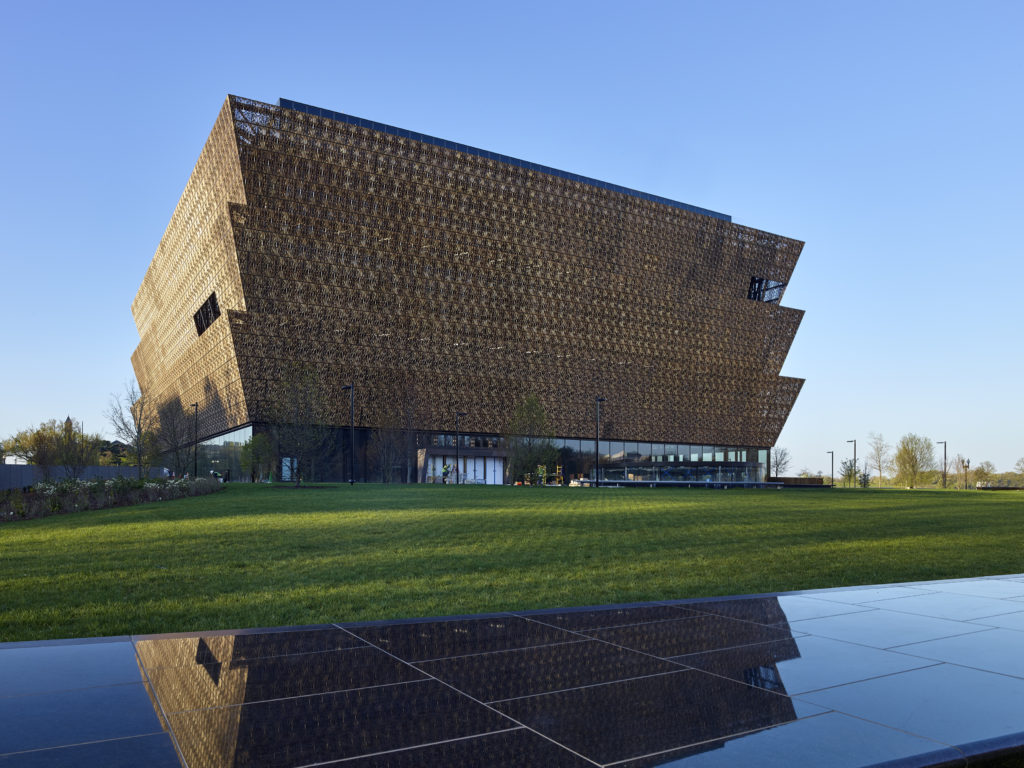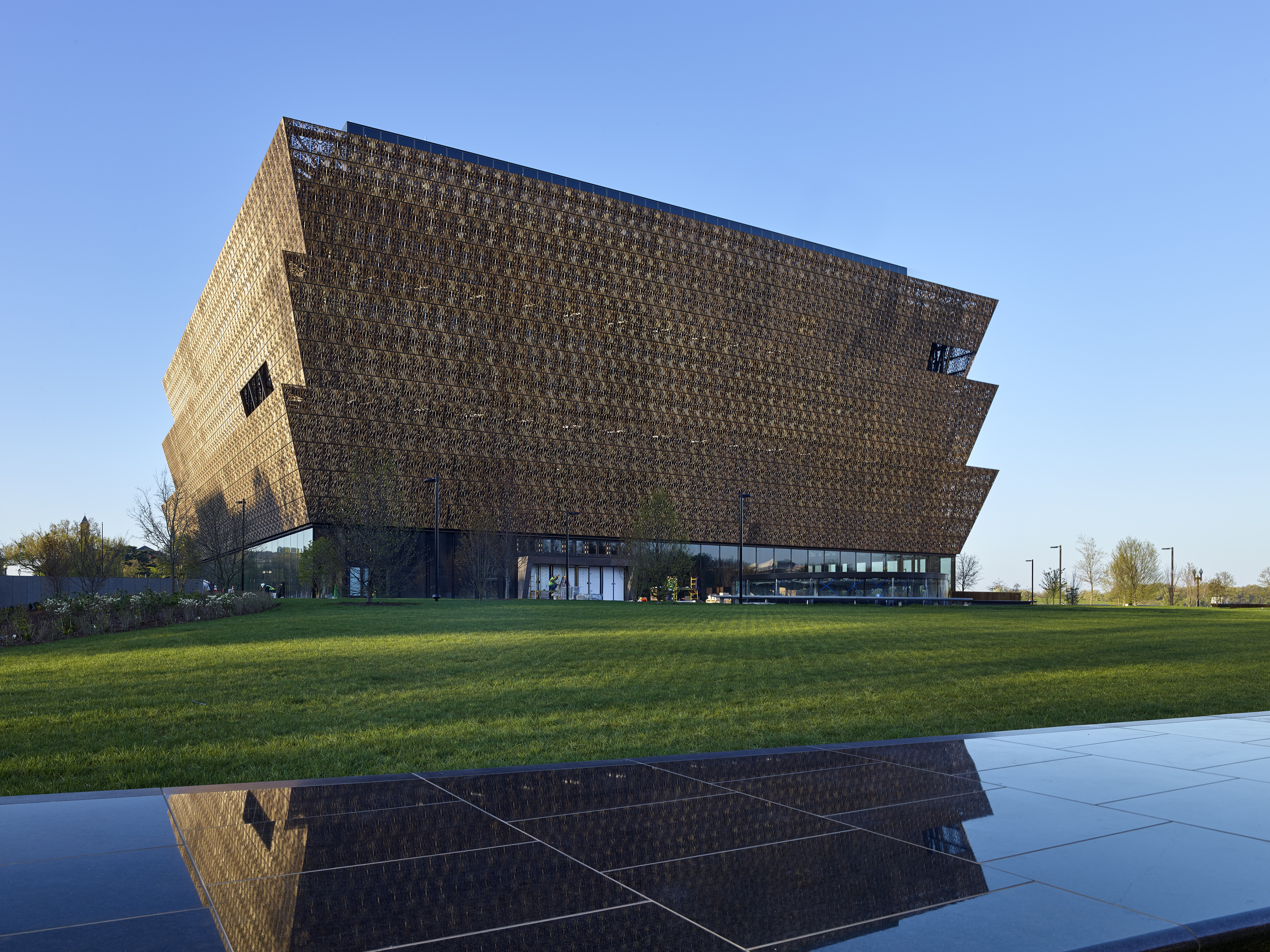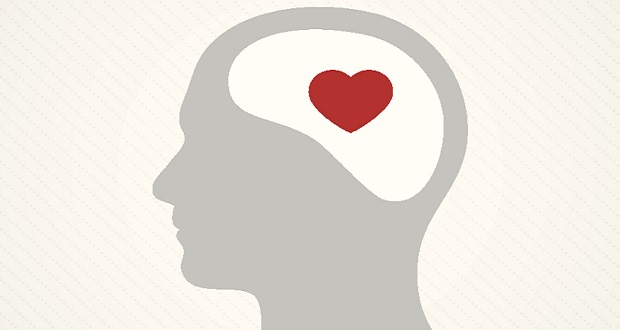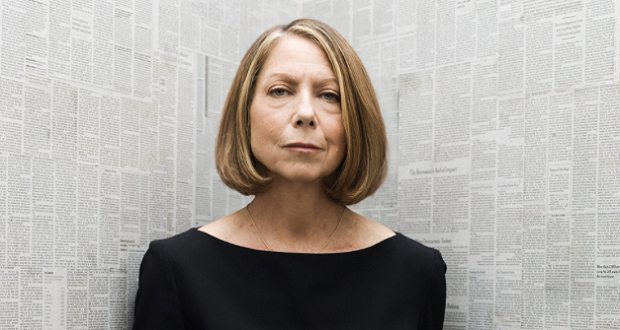
Smithsonian Institution, National Museum of African American History and Culture
“Why must we remember? Is this but a counsel of vengeance and hate? God forbid! We must remember, because if once the world forgets evil, evil is reborn.”
–The Crisis, 1919
A few weeks ago, I was afforded the amazing opportunity to visit the Smithsonian Institution’s brand new National Museum of African American History and Culture (NMAAHC) in Washington, D.C. As a resident of the D.C. metro area for about 15 years, I had the opportunity to watch as space on Constitution Avenue was cleared, foundation was slowly poured, and the new, glimmering, bronze-toned building came to stand on the National Mall, attracting visitors from across the country, and around the world. In that time, I graduate from high-school, graduated from college, and started my career. Finally, the museum was complete.
Opened September 2016, the museum celebrates and commemorates the rich history and tapestry of the African American experience in the United States from a unique vantage point that not only addresses the reality of the Transatlantic Slave Trade, but its effects on modern day society. Exhibits and subjects of the museum range from discussions of slavery, civil rights, segregation, Jim Crow, music, the arts, the African American family, the history of Black Greek Life Organizations (BGLOs), community, food, and even beauty. For many, the museum is a symbol of the unique experiences and culture the African diaspora, and particularly the African-American community, bring to our country.
I spent hours in the museum, reading over quotes from civil rights activists, walking in solemn silence as I quietly examined a baby cradle with shackles in the slavery exhibit, and, in some cases, learning bits of history I had never heard before. Many of the exhibits were difficult to take in, confirmed by the sharp intakes of breath, the murmurs, and teary eyes that emerged after leaving the galleries. Auction blocks. Chains. Darkness. There were some exhibits still, however, that evoked a sense of pride and certain hardiness. Rebellion. Education. Music. Strength. Hope. Light.
My favorite part of the museum, however, wasn’t found in the galleries themselves. Although the exhibits were certainly well thought-out and exceptionally presented, my favorite part of the museum was witnessing the interaction of individuals from all different types of backgrounds, races, genders, ages, and ethnicities, enjoying the galleries – together. How odd, to think that less than 60 years ago, these individuals would likely never be allowed to interact with each other in such a public space. 60 years ago, my very own grandparents had to walk through a door marked “Colored”, if they were even allowed entry at all. 60 years ago, there would likely be no acknowledgment of the debilitating effects of segregation.
Sixty years ago, having a museum dedicated to the history of African Americans would have been a pipe dream in itself. But today, with its intricate layout and stunning design, the museum sits in the heart of our Nation’s capital. Its existence is a testament to the resilience of those who have sacrificed their talent, time, monetary resources, and in many cases, lives, for the preservation of a history of people who have long been overlooked in our collective story as a nation.
It is through this remembering that we can make efforts to better understand and relate to the world around us. Establishments such as the NMAAHC allow curators to use the lens of storytelling to address the history and legacies that feed into many of the policies, systems, and policies that we see in the present day. It is a small reminder of how far we have come – and of how far we have yet to go.



















